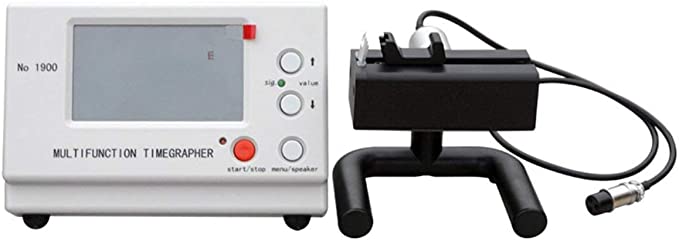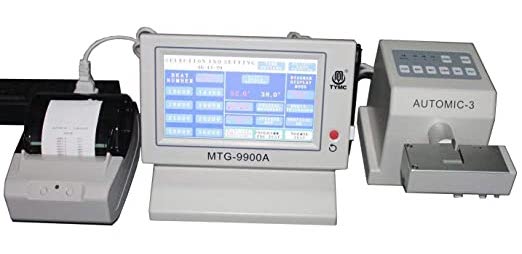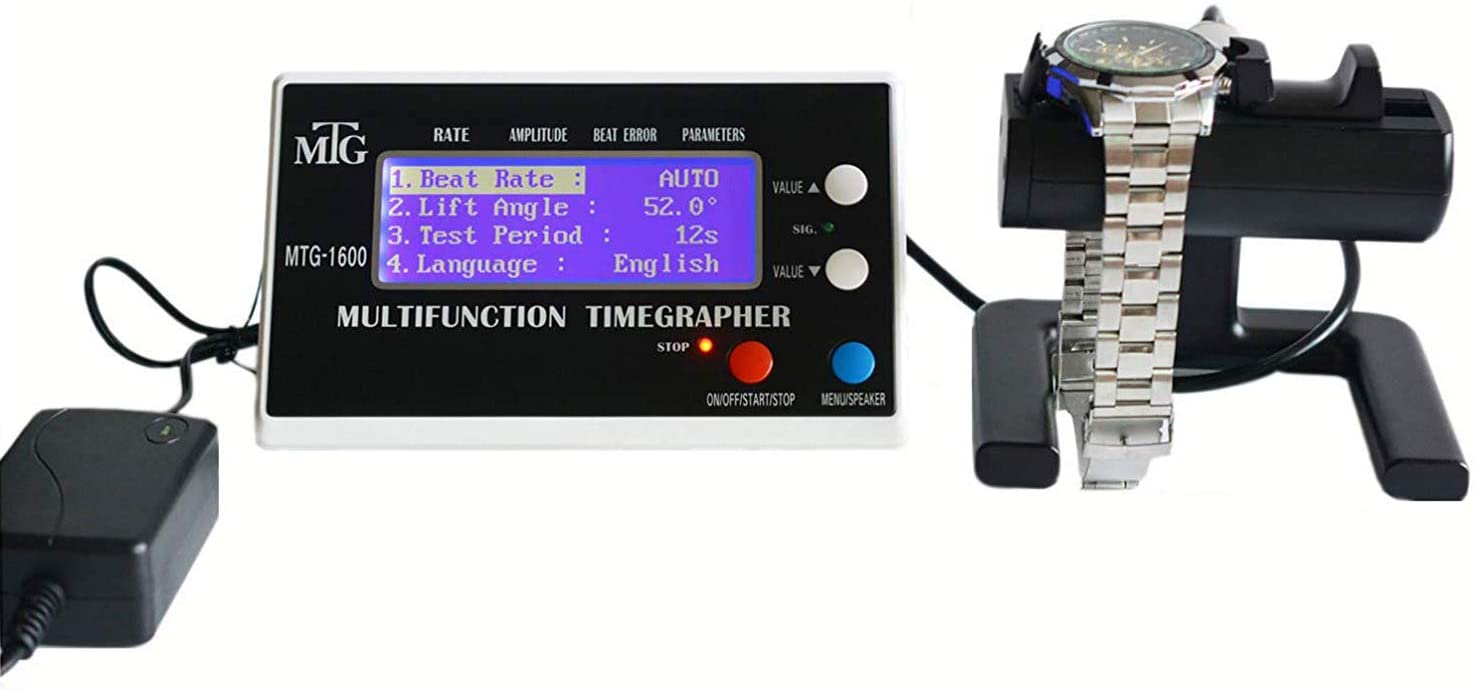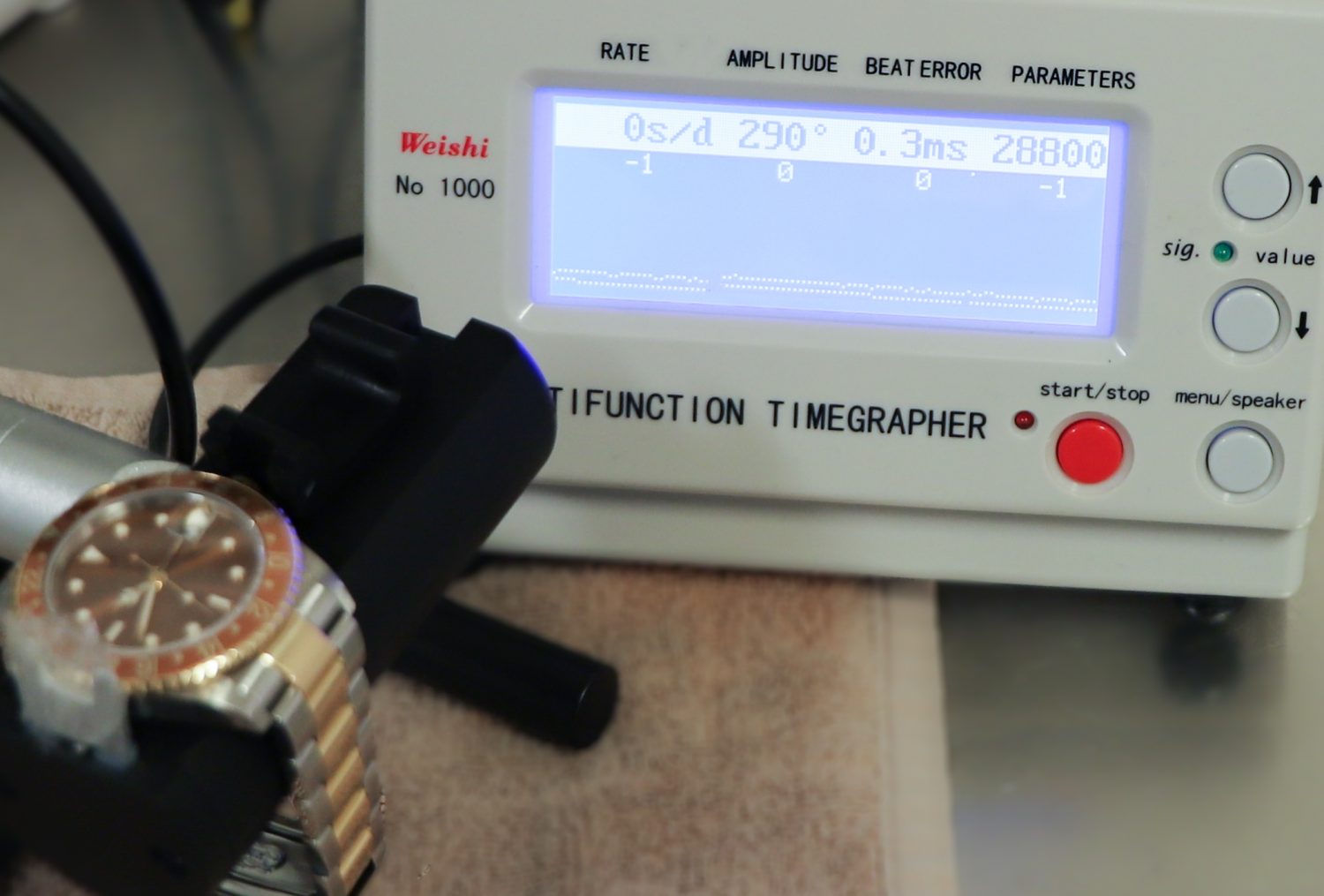
Best Timegraphers for Your Watch [List & Guide]
The accuracy of your watch is of utmost importance.
Whilst many of us wear wristwatches as a piece of jewelry, because we appreciate the craftsmanship, and because it looks great, the purpose of a watch is to tell the time.
Today, we have access to time almost anywhere we look. At computers, our phones, and more. But when we wear a watch, it of course makes sense that it keeps time well. Furthermore, there are many times when a wristwatch is more consentient for telling the time. A simple glance at your wrist takes only a second, and in places, such as meetings, it is easier and more respectful to discreetly look at your wrist than to take up your phone.
But with that said, it is also important that you should be able to rely on your watch and that it tells the correct time. With the help of a telegrapher, you will be able to easily measure your watch’s accuracy. As such, a timegrapher will also be able to tell you about the condition of the movement. For example, if you buy a watch, it can be difficult to know how it performs and
Yes, there are apps that you can use to measure your watch’s accuracy, but using these means having to measure the accuracy over a period of several days. With a timegrapher, you can get the results of your movement instantly.
How does a timegrapher work?
A timegrapher measures the beat rate, amplitude, and beat error of your watch. This means that you can instantly get the following information about your watch:
- The rate of your movement – how many seconds per day your watch runs fast or slow
- How consistent the beats from the balance wheel is
- Amplitude – how your movement is performing, more specifically how much rotation the balance wheel has.
By checking your watch in a timegrapher, you will be able to get an idea of the health of your movement. Most importantly if the watch is in need of a service or calibration. This can come in handy if you have just bought a watch (especially if old or vintage), as it is equally important to understand the condition of the movement as it is to know the condition of the watch.
A good indication is looking at the amplitude that the timegrapher displays. This is usually a good indication of the health of the movement and an indication it needs a service. If the watch has poor accuracy, it may only need to be regulated, but if the amplitude is poor, it is likely a sign that it needs to be serviced.
Below, we list some of the best and most popular watch timegraphers.
Best Timegraphers For Your Watch
As an Amazon Associate, we may earn from qualifying purchases, at no extra cost to you.
Weishi 1000 Timegrapher
The Weishi 1000 timegrapher is one of the most popular ones on the market. It does the job and gives you helpful information about your watch’s performance.
The timing machine will automatically calculate in real-time for the following:
- beat rate
- Amplitude
- Beat error
- beat number
It uses an auto microphone and is equipped, featuring easy and reliable operation.
Mechanical watch timing tester NO.1900 MTG-1900
This timegrapher is very similar to the one above.
The instrument will automatically calculate:
- rate
- amplitude
- beat error
- Beat number
…and display them by data in real time. In other words, it does the job and is just what most people need in a timegrapher.
Multifunction Timegrapher MTG-9900A Mechanical Watch Timing Machine w/Printer
This is a highly advanced watch timegrapher for the most serious enthusiast or watchmaker. It gives detailed information about the watch’s performance and also has an important feature, which most basic timegraphers do not have – a printer. The printer is able to print out the performance results from the tests which is really valuable for example if you are going to sell the watch and include the performance documents to prove the condition of the movement.
JIAN YA NA MTG-9900A Multifunction Timegrapher with Printer
This timegrapher is similar to the one above, and due to its many functions, it costs quite a bit.
It has a rate/amplitude monitoring program, and the lift angle will be automatically changed. It is able to test for a larger variety of beat numbers. It features a high-resolution digitally colored LCD touch screen and is capable of drawing the diagram of beat noises for up to 4.5 minutes on a screen.
It features a printer with which you can print out the results.
Multifunction Timegrapher MTG-1600
This MTG-1600 timegrapher has a modern and sleek design and is made to be thinner and lighter. The screen allows for easy reading. Like all timegraphers, it can provide beat rate, Amplitude, beat error, and beat number. The power supply voltage is 100V-240V.
How much does a Timegrapher cost?
The prices on timegraphers naturally depend on the type you choose and how advanced it is. The more affordable alternatives usually come in at around $200. The more advanced alternatives like the MTG-9900A Multifunction Timegrapher that have, for example, a printer, and more detailed information can cost around $3000. If you’re looking at ultra-advanced professional timegraphers used by professional watchmakers, they can cost even more than that.
What is amplitude on a Timegrapher?
The amplitude of a watch is the amount of rotation in the swing of the balance wheel back and forth. This is usually the best indication of the health of the movement. A healthy amplitude indicates that the movement has sufficient energy transmission and can function properly.
Witaschi, a brand that makes testing equipment for watches describes the amplitude in the following way:
“The amplitude is the angle from the equilibrium (idle position of the balance wheel) up to the maximum distance (turning point). The amplitude values of today’s popular wristwatches are located at about 260° – 310°. With increasing aging of the oils, this value decreases gradually.”
When your watch lies flat, it will have a higher amplitude since there is reduced friction and resistance, compared to when your watch is in a vertical position.
How to measure the amplitude of your watch
The process of measuring the amplitude of your watch is very straightforward when you have a timegrapher as this tool will present the information for you. A timegrapher will present the information about your watch’s amplitude on the screen.
In order to get the correct measuring of the amplitude, you need to make sure the movement is fully wound. In addition, since the amplitude can vary depending on the position of the watch, you want to make sure you test it in a few different positions. As mentioned, the amplitude will usually be lower if the watch is in a vertical position.
What is a good amplitude for a watch?
One of the things that indicate the health of your watch movement on a timegrapher is the amplitude. A watch should have a high amplitude, usually around 280-320. Anything less than 250 is considered a poor amplitude and something that needs to be fixed. If the amplitude is much lower than that, it is an indication that the movement isn’t performing as it should and needs to be taken care of.
In this case, it is usually not enough to just regulate the movement. In general, it will need a service as the low amplitude is probably caused by things like dried oil and worn-out parts. This is why regulating the movement may not solve this issue.
How do you use a Timegrapher to regulate a watch?
Most watchmakers use a timegrapher to first evaluate the health of the movement, and then to get information about its accuracy and performance in order to take appropriate action. If the movement needs to be regulated, a timegrapher is a convenient and important tool.
For a detailed guide, you can refer to this article which explains in detail how you regulate your watch using a timegrapher:
How do I make my automatic watch more accurate?
There are several ways to go about making your automatic watch more accurate. The most commonly used are to service the watch completely (meaning disassembling it, cleaning it, and lubricating it), and the other is by regulating it. There is also another, more simple method that may work if the movement is in good condition but just needs some adjusting. More on this further on.
If the health of the movement is really poor, it needs to be serviced by a watchmaker. An old and unmaintained movement will have worn-out parts, dried-out oils, and perhaps dirt inside the movement as well as damaged parts. In these cases, the only alternative is to have it serviced
If the movement just needs to be adjusted, regulating the movement could be a good solution. Regulation simply means slowing down or speeding up the movement. This is done by opening up the movement and adjusting the regulator lever inside.
For a complete guide to regulating your movement, you can watch this guide:
Lastly, we have the most simple way, which is to keep the watch in different positions. The easiest way to do this is by putting it on your night table before going to bed. If your watch is running slightly too fast, you can try putting your watch vertically on a table with the crown pointing down. If your watch is running really fast, you should place the watch on the side with the crown pointing up.
If your watch is losing time, you should place your watch flat on the dial with the dial pointing up.
This is a sheet that Rolex provided back in the day which advised its owners on how to adjust the watches in the same way as discussed above:
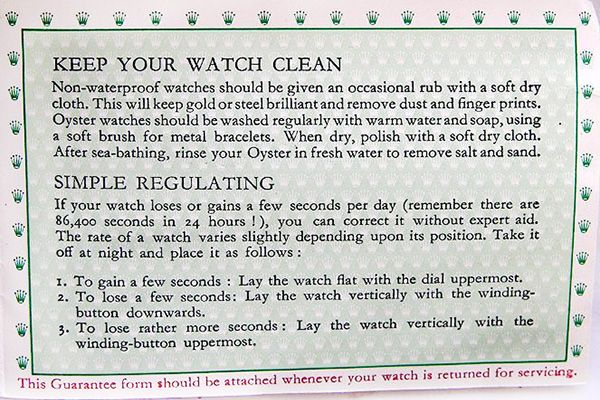
How do I know if my automatic watch is accurate?
This is why timegraphers are so useful. They tell you how your watch is performing in terms of accuracy and will tell you within a matter of seconds how many seconds the watch is losing or gaining per day. It is also possible to use apps or just note the exact time and then wait 24 hours, then check again. The downside to this is that it takes time and is not as accurate as when using a timegrapgher. This is why the easiest and most convenient way to know your watch’s accuracy is by using a timegrapher.
How do you demagnetize a watch?
The best and easiest way to demagnetize your watch is by using a demagnetizer which you can find here. Demagnetizers are really affordable and make it super quick and easy to demagnetize watches.
If your watch is magnetized, it usually starts running really fast. However, a magnetized watch can run both slowly and fast depending on which parts of the movement have been magnetized.


